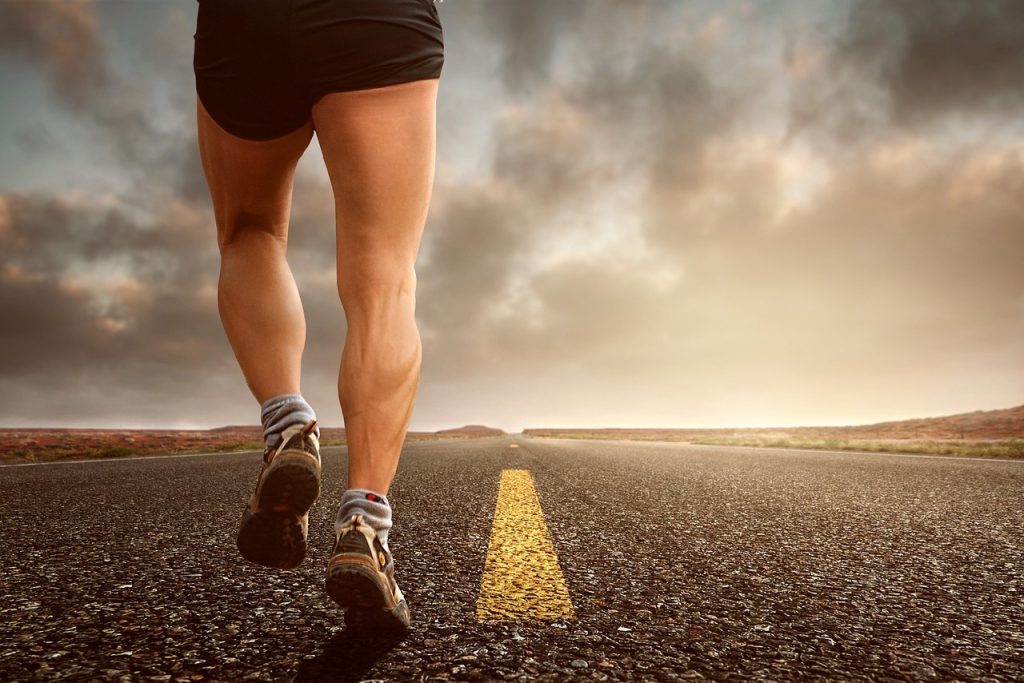Key words: Pelvic stress injuries, anti-gravity treadmill, MRI, iliac stress injuries
Method:We present a case report of a 21-year-old female elite runner who was diagnosed with pelvic stress injury and used an antigravity treadmill during rehabilitation. She was able to return to pain-free ground running at 8 weeks after running at 95% body weight on the antigravity treadmill.
Envisage:Using an anti-gravity treadmill for pelvic stress injury rehabilitation may result in appropriate bone loading and healing during overland running and faster recovery, allowing patients to compete normally. Future research may identify appropriate protocols, such as for recovery from overuse lower extremity injuries, as well as other uses of this technology, including neuromuscular recovery and injury prevention.
Overuse injuries are common in long-distance runners, especially in competitive athletes. Although stress injuries are common, iliac stress injuries are an uncommon location for injury in long-distance runners and can take 8-12 weeks of rest and modified activity to allow for adequate bone remodeling before returning to ground running. Loss of training and fitness can result in impaired performance and an inability to compete in the championship portion of a season. In this case presentation, we describe the use of an antigravity treadmill to aid in rehabilitation after a iliac stress reaction injury in a collegiate female runner.
Healer status:A 21-year-old female National Collegiate Athletic Association (NCAA) Division 1 runner with a medical history of left high hamstring tendinopathy, oligomenorrhea, osteopenia, and prior metatarsal stress fractures presented with left buttock pain of 4 weeks’ duration. She initially described her pain as tightness after stretching and occasional low back pain without radicular symptoms. Her symptoms were refractory to stretching and electrostimulation. On examination, she reported mild pain with direct palpation in a posteroanterior direction over the anatomical region that included the left lateral sacroiliac joint and left piriformis muscle. She had no pain with palpation over the proximal hamstring or ischial tuberosity.

Article cited in:Tenforde AS, Watanabe LM, Moreno TJ, Fredericson M. Use of an antigravity treadmill for rehabilitation of a pelvic stress injury. PM R. 2012 Aug;4(8):629-31. doi: 10.1016/j.pmrj.2012.02.003. PMID: 22920318.
Artical link:Use of an Antigravity Treadmill for Rehabilitation of a Pelvic Stress Injury
Phase 1 requires modification of activity to allow the athlete to remain pain free for 3-5 days.
During phase 2, non–impact-loading and light-weight exercises can be incorporated to address strength imbalances and sports-specific rehabilitation.
Phase 3 is a gradual return to normal running activities.
In our case, 5 days after diagnosis, the patient began exercises to address the strength imbalance, including isometric core and hip stabilization exercises. She was able to run at 50% of her body weight by using an anti-gravity treadmill early in her recovery and was able to be pain free by using the treadmill 5 weeks after the injury diagnosis.
This demonstrates that anti-gravity treadmills can be a useful treatment for pressure injuries in runners.

An antigravity treadmill may serve as a useful rehabilitation tool that may aid in recovery, because bone injuries require a gradual increase in forces to allow for proper healing and remodeling. Time to recovery for our athlete was similar to that in a case study in a 22-year old female runner without osteopenia or dysmenorrhea who developed a sacral stress-fatigue fracture. She incorporated walking and Nordic pole walking early in rehabilitation and was able to return to ground running at 7 weeks.
CONCLUSION:Iliac stress injury is a rare injury that may require magnetic resonance imaging to diagnose. Using an anti-gravity treadmill to rehabilitate an iliac stress injury may aid in the recovery of bone healing while maintaining aerobic fitness and returning to competition.
Future studies with larger numbers of athletes who use an antigravity treadmill are required to determine the benefits in rehabilitation and to develop progressive protocols for recovery from iliac and other bone-related stress injuries.